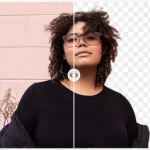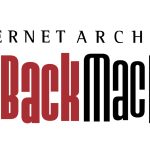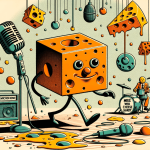A few decades ago, scissors were some of the most advanced tools for those looking to be crafty. Today, advanced technology has given the power of materials processing to the masses. Laser tools, in particular, are more precise, versatile, and affordable than ever before, meaning you can start performing laser materials processing – cutting, engraving, welding, and more – from your home.
However, before you start pointing your high-powered laser on any- and everything, you should learn a bit more about the best materials for laser processing. Here are ninebeginner, intermediate, and advanced materials to test your laser processing skills.
Cardboard
You can head to any recyclables dumpster behind any store to find as much free cardboard as your heart desires. That’s why cardboard is an excellent beginner laser processing material: It’s dirt cheap. While lasers aren’t proficient at raster engraving on cardboard, they can cut through the stuff like butter. While cardboard isn’t terribly durable, it is an inexpensive way to practice your designs before you commit to more costly materials.
Bamboo
Bamboo is the fastest growing plant in the world, and when finished properly, it is strong and attractive. You can usually find bamboo in varying thicknesses for relatively low prices – but, unfortunately, it doesn’t make a superb laser processing material. Large sheets of bamboo are prone to warping, and inconsistencies in density make engraving difficult. Still, cutting bamboo with laser tools is easy enough.
Cork
Like bamboo, cork is easy to grow, meaning it is more of a renewable resource than other materials on this list. Also, like bamboo, cork isn’t excellent for engraving. However, its unique texture and flexibility make it a fun material to add to projects, and it is relatively kid-friendly.
Plywood
Laser cutting and engraving plywood tends to be more successful than cardboard thanks to the material’s more-uniform density. Plus, despite plywood’s low expense, you can stain and finish plywood to make your project look nice.It might still have a rough look and feel, but it will probably be sufficiently durable.
Wood Veneer
Usually higherquality than plywood, wood veneers are easier to cut and just as easy to engrave. Aside from the varieties of wood – ash, maple, oak, etc. -there are five different types of veneer you can use in laser processing. You can layer veneer onto nearly any project, providing a unique and beautiful finish.
Melamine
Melamine is a type of thin durable plastic. In the past, it was used for all manner of things, including tableware; however, recent findings concerning melamine’s toxicity indicate you shouldn’t make things that put the material in contact with food or drink. Still, melamine reacts well to laser processing, so you should experiment with the material with your laser tools.
Acrylic
Perhaps the best laser processing material you can get for your money, acrylics show high levels of detail without requiring much work. Acrylic materials for 3M electronics and similar projects can be found at your local hardware, office supply, and electronics stores. Plus, there are a wide variety of acrylic options, including different types, colors, and thicknesses, so you can find exactly what you want for your project.
Paper
Laser-cut paper makes for a gorgeous decoration on cards. Because paper is so thin, it seems like anyone should be able to complete laser-cut paper projects – but it is exactly paper’s thinness, its delicacy, that makes laser paper processing difficult. It takes some experimentation to learn how to cut paper without burning the edges, so you should only attempt paper projects after you get a feel for your laser’s settings.
Felt
Like paper, felt has a propensity to burn when cut with a laser. However, felt even with some singed edges, felt still provides a high-quality finish to projects. Plus, because felt comes in all colors and patterns, it is easier to customize the look of your laser projects when you use felt.
Leather
Leather is a dream material for laser cutting and etching. All types of leather, including suede and artificial leathers, are excellent at displaying delicate details. Unfortunately, leather can be pricey, and typically the higher-quality leather you use, the better your final product will be. To avoid making mistakes with a costly material, you should hold off on leather projects until you have more laser processing experience.












